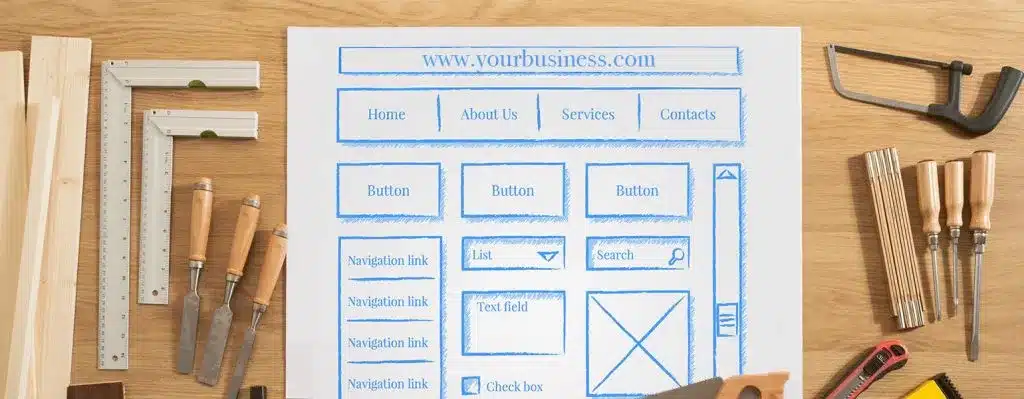Today, increasing a small business’s promotion and sales often starts with websites. Every successful and well-known company has a website. Think of a big brand, corporation, or even a clothing company you know. Google their name. They probably have a website, right? That’s the online face of their business—and in a world where people are more active “online” than “off,” that face is essential to business success.
There are several reasons for having a business website—providing crucial information about your products/services to potential buyers, sharing store locations, communicating with the market about your latest marketing campaign, and more. The average revenue for a small business is $3.6 million, but for a small business with a website, it is $5.03 million (Source). So your business clients definitely need a website in order to keep their heads above water.
However, setting up a business website from scratch is easier said than done—even for digital marketing agencies. In light of this, we’ve provided 10 steps to answer your question, “How to set up a website for small businesses”!
Leverage a suite of web hosting tools to do the heavy lifting for you
10 Easy Steps To Create a Small Business Website
1. Domain Selection and Registration
In short, registering a domain name can enhance the credibility of your website on the Internet. At the same time, your domain name can help build up your brand identity.
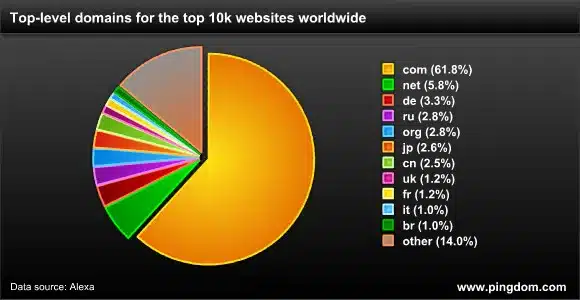
Your domain is like your street address on the internet, and you can’t get visitors or create a website without a domain! A good domain name is the first step to gaining brand trust, which will lead to higher conversion (sales).
When registering your main domain, I would also recommend that you register all the related domain extensions (.net, .org etc). This will protect your own brand identity from other parties who want to copy yours. Therefore, I will say choosing and registering a domain name for your website is the single most important thing to start with.
How to Register a Domain
There are many domain registrar companies available where you can buy your preferred domain, like GoDaddy. You can go to their website and check a domain name’s availability in their Domain Name Search column.
After selecting a domain name that is available for use, you can follow the procedure listed on the website to register it—it is just as easy as flipping your hand.
Note: Godaddy offers up to 70% discount to register the related domains when purchasing a new domain.
2. Select a Trusted Hosting Provider
After buying a domain name for your website, you’ll need a hosting service to host your website. Hosting determines where your website really sits on the internet. Where are your website files stored so people can access them over the internet? A hosting service provider will give you a virtual space to upload your files, bandwidth to load your website every time a visitor arrives on your site, and many other things. Check out the image below to see how hosting works.
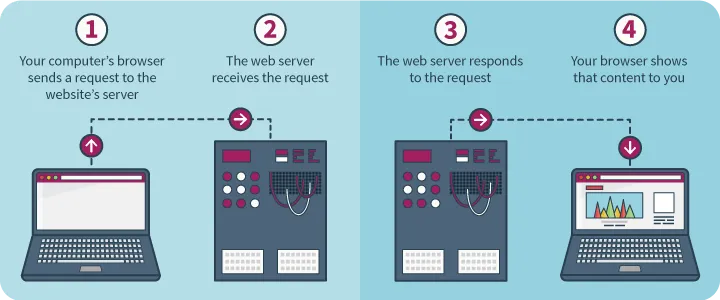
Image Source: Whoishostingthis
Choosing a hosting provider can be a difficult task. You will need to consider and balance the services they provide as well as the costs they charge. The key things to look for a good hosting are: bandwidth, SSD storage, domain uptime, backup system, server response time and cost.
Usually, the costs hosting provider charges will be a monthly payment, so it will be a long-term, stable expense.
For fast, secure, reliable Google cloud-based hosting services, check out Vendasta’s WordPress Hosting.
Which Website Hosting Option to Choose for Small Business Websites
If you search “hosting service” on Google, you’ll find hundreds of options. The real question is, which one can you trust—and which one truly benefits your business clients?
For agencies managing multiple small business websites, Vendasta’s WordPress Hosting is the clear choice. It’s built specifically for agencies that need reliable, high-performance hosting without the technical hassle. Traditional hosting setups with manual cPanel and FTP management can quickly become overwhelming as your client list grows. With WordPress Hosting, all that complexity is handled for you, so your team can stay focused on building and growing client websites instead of troubleshooting servers.
Because it’s powered by Google Cloud Platform, WordPress Hosting delivers exceptional speed, uptime, and scalability. Websites load lightning fast, run securely, and stay optimized even during traffic surges. Plus, with automated backups, free SSL, and centralized multisite management, you’ll have everything you need to host, maintain, and scale client sites confidently—all from one platform.
3. Find a Great Content Management System
A lot of you may be wondering: What is a content management system (CMS)? A CMS is a web application that helps you create, edit, and manage digital content. Different CMSs have quite varied features, but most include web-based publishing, content format management, media library and usage, plugins/add-ons, and more.
In short, a CMS serves as the backbone for you to create a website and publish content effectively.
Importance of Using a Content Management System
There are a couple of reasons why you will need to install a CMS. The very first is that a good CMS will help you manage your entire website. It’s far easier to create, publish, and remove a page via CMS than to manually edit your website code. Most of the CMS options also create SEO-friendly static URLs automatically (Learn more about static URLs here).
Plus, many of the most popular CMS support thousands of themes and plugins, which will help you to create a unified look and feel for your online brand, and make your website user experience more pleasant and streamlined for conversion.
Suggested Reading: No Devs Necessary: Why You Need a White Label Website Builder
4. Use WordPress as Your CMS
Ok, so, which CMS should I use? This is a good question, but potentially a tough one to answer. After all, you only need one CMS, but there is a swamp full for you to choose from. To name a few, there’s WordPress, Joomla, Drupal, Wix, Weebly, Medium, and Tumblr.
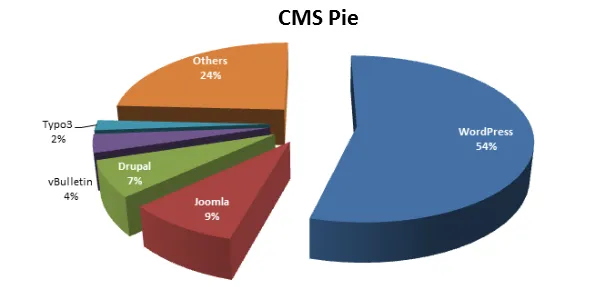
Our personal recommendation is also the most popular—WordPress. 74.6 Million Sites Depend on WordPress (ManageWP). This is often regarded as one of the best CMS options available in the market (both the Vendasta blog and main website are hosted on WordPress!). It is very easy to use—and this is important if you are not an expert on creating websites, or want to create fast effective websites for your clients. The learning curve for WordPress website management is very easy, and you’ll get used to its interface and be able to make quick changes to your clients’ websites in no time.
WordPress also has tons of plugins that allow you to collect, analyze, and use your business website’s statistics. This is particularly important for a business, as after interpreting the data, you have can reveal a lot about your market and industry.
Make Your Site Mobile Friendly
The icing on the cake of WordPress is that it is mobile-ready, and you can easily optimize your website to have AMP pages through WordPress plugin. Many people nowadays may surf the net using their phones instead of using laptops or a PC computer. As of today, 50% of online shopping is done on a mobile device (Website Stats). So, if your website does not support using phones, then it will be a huge pity as it means loss of huge potential traffic, sales, and reputation. Therefore, I am sure that you will be happy using WordPress as your CMS.
Select a Good Theme
To set up your website in WordPress, you will need a theme. Selecting a good theme may be one of the very few decisions for you to make at the early stages. Typical CMS options provide many themes for you to choose from. It’s easy to find a theme that has easy customization options to really make the site your own and avoid the struggle of making manual code changes. Although you may feel like having a theme related to the business.
Your theme choice is all up to you—after all, the content and the smooth operation of the website are more important than the theme, right?
Resource: The best place to find premium WordPress theme is ThemeForest
5. Plan Your Content Strategically
After getting the necessary systems and domain name, you can actually start designing your website! The first thing you will need to decide on is what content to add in your website.
Imagine if there were a website with an overload of information and paragraphs upon paragraphs of words and text. How would you feel? Bored or even headachey, right? That’s the point.
Do not just include everything about your business on your website. While it is called a small business website, you should know that its size should also be small, and more importantly, user-friendly.
An ideal small business website needs to be down-to-earth and user-friendly enough so that the local customers will feel free to engage and convert. Therefore, do not bother writing a 1000-word service description or jamming your homepage with text. It may be cruel, but you need to know that, actually, no one is interested in it.
What Should You Include on Your Website?
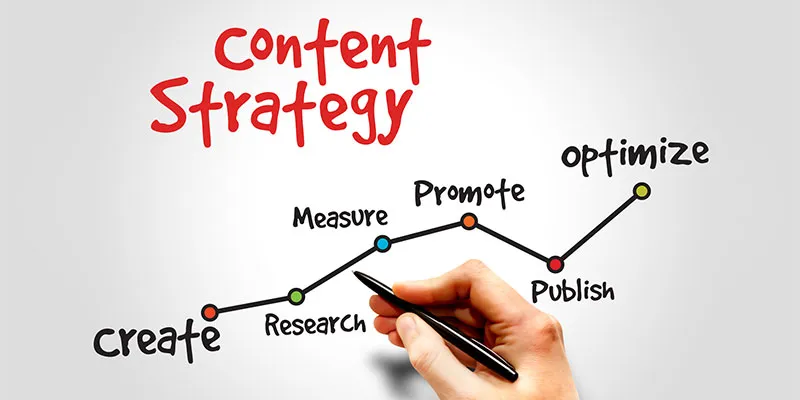
There are several items you must include on the website, such as what your business is about and what products you offer. The trick here is to remember that the aim of a small business website is to catch a user’s attention and turn them into your customers. Therefore, you NEED to put content that will interest customers on the website and place it in the center of your webpage so they can see it.
Ask yourself: which products are the most interesting or which one is the key service that represents your company? Make sure that messaging is loud and clear, front and center, so it’s the first impression the users get of your business. (And make sure it isn’t just a pushy sales pitch, either!)
Suggested Reading: How I Learned to Stop Worrying and Love the Landing Page
You must also include important technical information about your business, including how customers can contact you. Assume you have successfully captured their attention, and they want to either purchase your products or contact you for more details about the plan. To do so, they will need the essential information to find you; otherwise, all your effort will be spoiled. Therefore, include a clear “Contact Us” or “Contact information” section on the website so customers can take follow-up action.
6. Add Your Business Philosophies, Value, and Mission
 Apart from your brand name and logo, perhaps the next things that can help distinguish you from competitors are your mission and your business’s core philosophies. What does your brand stand for? That crucial “heart” of the business is what consumers can connect with, becoming not only new customers but also brand advocates for you.
Apart from your brand name and logo, perhaps the next things that can help distinguish you from competitors are your mission and your business’s core philosophies. What does your brand stand for? That crucial “heart” of the business is what consumers can connect with, becoming not only new customers but also brand advocates for you.
A study from Xero found that “20% of the pages we assessed still left us with no idea what the business does”. So, you need to include your philosophies, values, and beliefs on the website because the market needs to know them. Knowing your company’s positioning can help customers make the tough decision of which brand to choose.
At the same time, your business values or your company’s mission can also help you develop your brand identity. This is again a branding thing, and it will affect how the market sees you. For example, do you consider yourself a provider of high-quality products in the industry? Or that you focus on the lower end of the spectrum and provide the product at a low cost? Or are you ambitious enough to say that you will satisfy both?
Related Reading: How to Sell Website Services to Local Businesses
You actually need to have one focused business philosophy, whether it’s customer service, product, costs, or something else. And then you will need to communicate it well to the customers. What is a good way to communicate it to the customers? Well, we are talking about ways to set up a business website from scratch, so use your website!
On a lot of business websites, the company will have a separate section for their business ideas so that customers can fully understand what the company is doing and planning to do. If you do not want to create a separate webpage for that, you can alternatively include it in the “About Us” section. That works too.
7. Design Your Website
Now is the time to let your inner artist (or hired designer) loose! It is the moment for you to utilize your artistic talents and really design the website. We’re talking about creativity, which means that there is no fixed formula for creating a beautiful site that your target audience will connect with. Why not? Beauty is subjective! A study shows that website credibility is judged 75% on the site’s overall design.
However, you will need to know that the main purpose of the website is not to show off your artistic talent, but to communicate information about the small business to the public—unless, of course, if your business is related to fashion or design, then a nicely designed website will give viewers confidence in your skills.
Related Post: Website Content 101: Why Ugly Websites Finish Last
Which Color to Choose for Your Branding?

Image Source: Onextrapixel
You can start by choosing a theme for your small business website. Proper theme customization will help you set the design framework for your website. Do some research and try to understand your audience’s taste. Then design your wordpress website accordingly.
For example, if your philosophy is to pay attention to a business’s corporate responsibility, you may use warmer colors to indicate the company’s loving and caring nature. On the other hand, if you want to convey a fashionable, chic image, a black or bold background color may serve the purpose well.
There is just no shortcut to understanding your users’ tastes. So, all you require is research, trial, and error. Do A/B testing and try different versions of the design. Then ask your partners, staff, or friends to provide feedback. Collect user feedback and then refine the website. This may mean a long time is needed, but the time will be worth it to create the perfect website for your user base.
Suggested Reading: A Beginner’s Guide To AB Testing
8. Avoiding Errors—Technical Errors
This can be hard if you are a novice, but you must try your very best to avoid technical errors with your website. This is because viewers will quit visiting your website if they land on a faulty page or experience technical issues while exploring what your business has to offer.
There are mainly two types of problems or errors that I am talking about.
The first is the technical errors on your website. For example, when they click on the section of “products,” nothing happens with no redirection (no link). Or when they click on “About us” and it takes them to a 404 page. This is a coding error on your website, and it can be easily made, but of course, it can also be easily fixed.
The second type of error is the clerical error, which I will cover in the next section.
One of the most common sources of this type of error is the language column. While many small business websites allow users to change the language to cater to customers from different places, the options or buttons do not always work. And sometimes it just shows half the page translated. Which can be frustrating for a user, and that’s not a good sign for your business.
Suggested Reading: Speed Kills: How to Audit and Improve Your Website’s Speed and Performance
How to Find Out All These Errors?
Again, you will need a couple of trials to make sure that all the web pages, buttons, and intended functions are working properly. Most of the time, manual checking and auditing are enough for a small website. But if your website is big enough and you need to scale the auditing process, I would recommend trying WebCEO and ScreamingFrog.
9. Avoiding Errors—Clerical Errors
Another type of silly error is clerical error—be it typos, spelling mistakes, or grammatical errors. The implication is that the website creator and the business itself are not willing to spend the time to proofread or edit the content. If this is the case, how can you persuade them that you will pay sufficient attention to their needs? At the same time, you will be seen as an unprofessional business, and your brand and goodwill will be negatively affected. Therefore, these types of errors matter.
The way to eradicate this trouble is, of course, proofreading and proofreading, but how can you do it effectively? You should be hesitant to rely solely on yourself to proofread your website content. This is because we all have blind spots we cannot detect, so I would recommend passing the content around for your teammates to proofread so that all the mistakes and problems can be revealed.
You can also use Grammarly—it’ll proofread your writing in real time. I would recommend purchasing the premium membership, as you can also use it for other business purposes, such as replying to important business emails or creating new written content.
While there are a lot of methods, there is only one goal—to be 100% sure that your website is free of silly mistakes.
10. Full Website Setup and Launch
Yes, you’ve guessed it right. We’ve finally reached the final step: launching your website! Before you finally make your website public, as I have said many times before, run it through several times to ensure that all functions and areas are working as intended. And I mean all of the websites. Please do not just test the home and service pages where you think most viewers will visit, but ignore the others. You need to test each and every webpage on your website to ensure they are free of errors. Again, the differences between good and bad small business websites lie in the details.
After several tests, and if you are satisfied with your website, then BINGO—it is good to go!
Conclusion
The steps to create a good business website may be complicated, and you may be tired of tediously working through them. But you need to remember the importance of such a website to your business—it will promote your brand identities and attract customers, and more importantly, it is nearly free except for the hosting fee! What is better than that if you can get more people to know about you by spending nearly nothing?
After reading this article, I hope you will have a clearer picture of how to create the best small business website from scratch, and I am confident that if you follow the steps carefully, your website will be successful.
If you’re building websites for your small business clients, grab our 10-step bulletproof workflow to get started successfully.
Create Small Business Website FAQs
1. How do I create a small business website from scratch?
To create a small business website, start by choosing a domain name, selecting a reliable hosting provider, and using a CMS like WordPress. From there, design your pages, add relevant content, and optimize for search engines to attract visitors.
2. What is the easiest way to build a small business website?
The easiest way is to use a managed WordPress hosting platform like Vendasta’s WordPress Hosting, which includes pre-configured templates, automatic updates, daily backups, and AI tools. It eliminates technical setup, letting you focus on content, branding, and conversions.
3. How much does it cost to create a small business website?
Costs can range from $500 to $5,000 depending on design complexity, hosting, and features. With Vendasta’s white-label WordPress Hosting, agencies can build and manage multiple client websites affordably, offering recurring services without high technical overhead.
4. Do I need a website if my small business uses social media?
Yes. Social media helps you engage audiences, but a website gives your business a home base online. It builds credibility, improves SEO visibility, and converts visitors into customers by providing all essential details in one trusted location.
5. What are the key elements of a successful small business website?
A great small business website should have a clear value proposition, fast load times, secure hosting, mobile responsiveness, easy navigation, and optimized content. Together, these elements help attract visitors, improve SEO, and drive conversions.
6. What is the best platform to use for small business websites?
WordPress remains the most flexible and widely supported platform for small businesses. When paired with Vendasta’s managed WordPress Hosting, agencies can create scalable, secure, and high-performing websites without worrying about server management or updates.
7. How long does it take to build a small business website?
A simple site can be built in a few days, while more complex projects may take several weeks. Using pre-built templates, automation, and staging tools—like those included in Vendasta’s WordPress Hosting—can significantly shorten production timelines.
8. What should I include on my small business website?
Include essential details like your products or services, contact information, business location, and clear calls-to-action. Adding customer reviews, an About page, and FAQs also builds trust and helps visitors find what they need quickly.
9. How can I make my small business website rank higher on Google?
Focus on SEO best practices: use relevant keywords, optimize meta tags, improve site speed, and publish high-quality content regularly. Platforms like Vendasta’s WordPress Hosting make this easier with built-in SEO tools and performance monitoring.
10. How can agencies efficiently create small business websites for clients?
Agencies can streamline builds by using Vendasta’s all-in-one platform, which combines hosting, CRM, AI automation, and white-label fulfillment. This setup allows teams to manage multiple sites, automate maintenance, and scale recurring revenue with ease.

